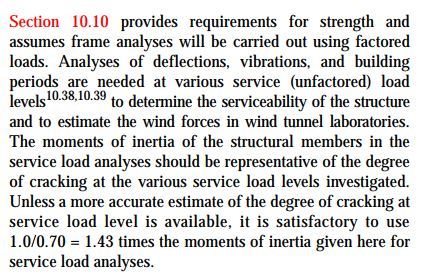Hello everyone,
My question is in regards of the cracked stiffness of elements in the analysis and design stages of Reinforced Concrete structures.
1. EC8 as other standards suggest reducing the stiffness of elements (cracked elements) to 0.5 of the
uncracked elements in order to cary out the seismic analysis.
2. Once the analysis is carried out (w/reduced stiffness), the resultant moments and shear forces are
available for the design of the elements.
Question:
Therefore my question is...for the design of the elements do i have to use the reduced stiffness (smaller section) that was also used in the analysis or
do I the use stiffness of the uncracked elements (original section)?
My question is in regards of the cracked stiffness of elements in the analysis and design stages of Reinforced Concrete structures.
1. EC8 as other standards suggest reducing the stiffness of elements (cracked elements) to 0.5 of the
uncracked elements in order to cary out the seismic analysis.
2. Once the analysis is carried out (w/reduced stiffness), the resultant moments and shear forces are
available for the design of the elements.
Question:
Therefore my question is...for the design of the elements do i have to use the reduced stiffness (smaller section) that was also used in the analysis or
do I the use stiffness of the uncracked elements (original section)?

